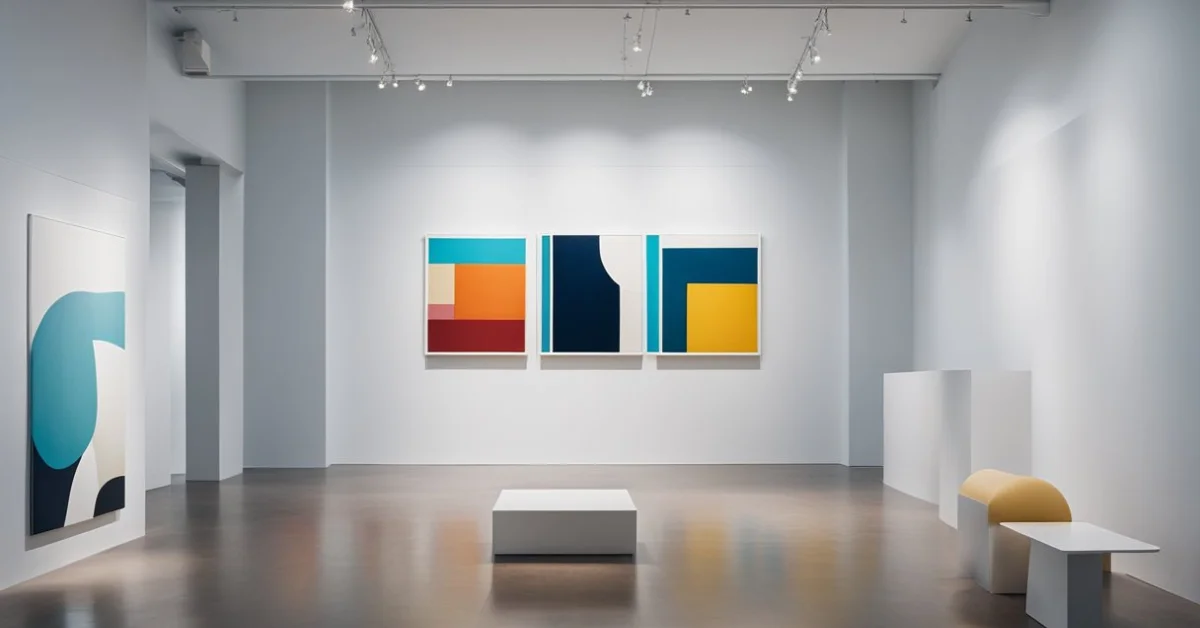Minimalist modern abstract art strips down the subjects to pure form and simplicity, inviting viewers to interpret art without the clutter of intricate details.
This style emphasizes the importance of the composition’s basic elements: color, shape, line, and texture. The art form emerged in the post-World War II era as a reaction against the complexities and pretensions of the abstract expressionist movement, favoring instead a purity and clarity of design that seeks to express the essence of an object or concept.
We see in minimalist modern abstract art an adherence to the aesthetics of order and harmony. It’s an approach centered on the belief that beauty and meaning in art can emerge from the reduction of its elements to their fundamental aspects. This school of art defies traditional representation, moving away from the depiction of reality to focus on truth’s abstract nature.
The artists employ a variety of mediums, from traditional canvas and paint to metal and found objects, ensuring the medium aligns seamlessly with the minimalist philosophy.
Key Takeaways
- Minimalist modern abstract art prioritizes form and aesthetic purity over complex detail.
- It originated as a counter-movement to abstract expressionism, focusing on order and harmony.
- This art form utilizes diverse mediums to underscore minimalism’s core principles.
Historical Context and Evolution
Minimalist art emerged as a significant force, challenging the complex, expressive works of previous decades. We’ll chart its course by examining its inception, the surrounding movements that influenced its trajectory, and the pivotal figures whose works came to define it.
Origins of Minimalism
Minimalism in art developed as a reaction to the highly subjective nature of Abstract Expressionism, which dominated the post-World War II era. We seek to understand Minimalism’s emergence as a distinct art movement in the 1960s America, emphasizing simplicity, order, and a focus on the physicality of the materials used. Kazimir Malevich, a Russian artist, is often cited as a predecessor with his non-referential works, such as the notable “Black Square” painting.
Influential Movements
Several art movements provided philosophical and aesthetic underpinnings for Minimalism. We recognize that while Minimalism was a direct counter to Abstract Expressionism, with its emotional intensity and subjective gesture, it also derived aspects from movements like Constructivism with its geometric abstraction. Minimalism’s stark reduction of form and its emphasis on objecthood challenged the traditional notions of sculpture and painting.
- Abstract Expressionism: Reverberated with emotive or expressive content
- Constructivism: Emphasized a technical analysis of modern materials
Key Artists and Their Contributions
We’ll examine a few paramount artists who crystallized the minimalist ethos in their works:
- Frank Stella: Pioneering minimalist painter, known for his shaped canvases and “Black Paintings” series.
- Agnes Martin: A minimalist painter celebrated for her delicate, grid-like works.
- Sol LeWitt: Credited with conceptualizing minimalism beyond physical form, with his famous “Wall Drawings.”
- Dan Flavin: Utilized fluorescent lights to explore space and color, fundamentally sculptural in his approach.
- Donald Judd: His straightforward, unadorned boxes and repeated forms rejected traditional sculptural methods.
- Robert Morris: His minimalist sculptures investigated the relationship between the viewer, the artwork, and the space.
- Richard Serra: Known for his large-scale steel works, which engage with the viewer’s experiences of weight and gravity.
- Carl Andre: His arrangements of commercial, unaltered materials made him a key figure in minimalist sculpture.
The following table outlines these artists alongside their notable contributions to Minimalism:
| Artist | Notable Contributions |
|---|---|
| Frank Stella | Shaped canvases, “Black Paintings” |
| Agnes Martin | Subtle grid works emphasizing the meditative quality of art |
| Sol LeWitt | Intellectual foundations for minimalist art, “Wall Drawings” |
| Dan Flavin | Use of fluorescent light as a medium |
| Donald Judd | Reinvented sculpture with his “specific objects” |
| Robert Morris | Interactive minimalist sculptures |
| Richard Serra | Explored industrial materials in large-scale works |
| Carl Andre | Laid out raw materials on the floor for a new sculptural experience |
Characteristics of Minimalist Modern Abstract Art
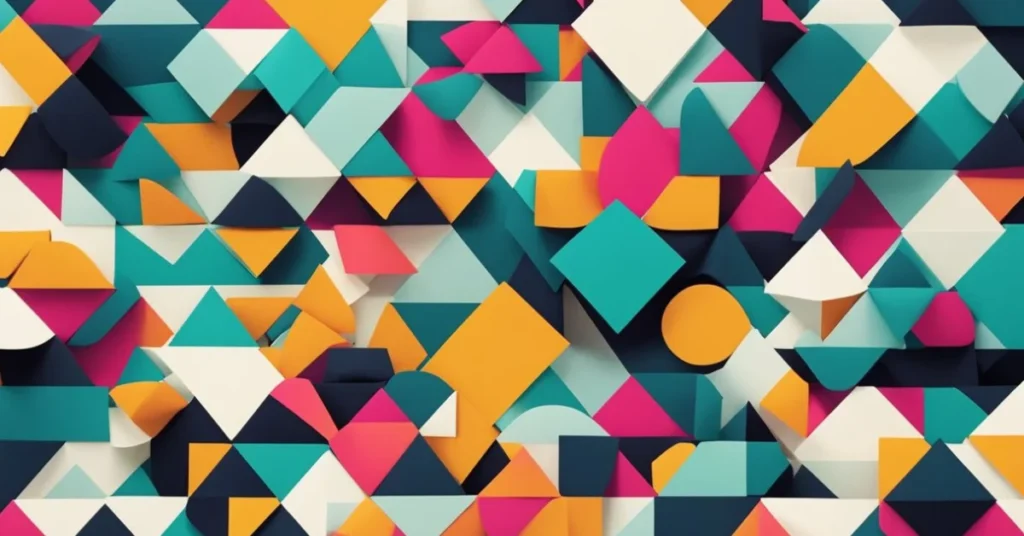
We observe that minimalist modern abstract art is marked by its simplicity and purity of form, stripping away extraneous details to focus on the essentials of color, material, and shape. This reduction aims to amplify the artwork’s emotion and conceptual impact, making each piece a distilled expression of artistic intent.
Defining Aesthetic Properties
Minimalist art is defined by its simplicity and a focus on order. We recognize these works by their clean lines and absence of decoration. The art often seeks to expose the essence of its subject through abstraction, creating a direct encounter with the form and beauty of the material itself. The aesthetic properties gravitate towards reducing forms to their bare essentials, which in turn promotes a sense of calm and serenity, often associated with the pursuit of purity in art.
Use of Color and Material
In minimalist abstract art, color and material are essential in shaping the viewer’s experience. Artworks may employ a monochromatic palette or limited color schemes to avoid visual distraction and to enhance the inherent qualities of the materials used. Common materials found in minimalist sculptures and paintings include industrial components like steel, glass, and concrete, which are chosen for their simplicity and ability to convey a clear, undiluted message. We often see:
- Materials: Industrial (Steel, Glass, Concrete)
- Color Schemes: Monochromatic, Limited
Form and Spatial Concepts
The forms in minimalist art are typically geometric, characterized by repetition and symmetry, emphasizing form and space. We understand the artwork’s structure to be integral to its interpretation. Sculptures often have a strong physical presence, engaging with the surrounding space and the observer’s perspective. The interaction between the artwork, its environment, and the viewer is a deliberate and critical aspect of minimalist design, stressing the role of space in experience.
- Shapes: Geometric (Cubes, Spheres, Rectangles)
- Engagement: Viewer’s Perspective and Space Interaction
Emotional and Conceptual Impact
While minimalist art may appear emotionally neutral, it invites viewers to a deeper, more personal engagement. By reducing distraction, the artwork foregrounds the emotional and intellectual response. The meaning and impact are often realized through reflection and personal connection with the work, as its simplicity can evoke complex emotional states. The abstraction inherent in minimalist art allows for a broad range of personal interpretations, leading to a diverse array of impacts on the audience.
- Viewer Engagement: Reflection and Personal Connection
- Emotional States: Complex, Evoked through Simplicity
Techniques and Media
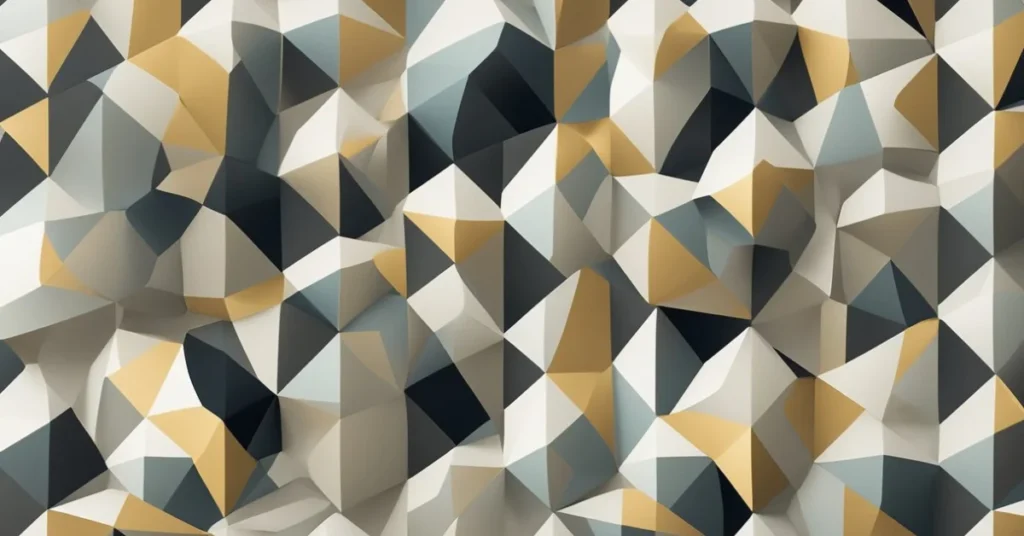
In minimalist modern abstract art, we focus on the use of novel techniques and media that emphasize simplicity and the use of space. Each medium comes with its distinct methods of emphasizing the core principles of minimalism.
Sculpture
In the realm of sculpture, we see a lean towards industrial materials and existing structures. Minimalist sculptures often display an acute sense of physicality, with an emphasis on the materiality of objects. Artists may use:
- Materials: stainless steel, glass, concrete, and plastic.
- Approaches: geometric forms, repetition, and reduction to basic shapes.
A common technique involves treating different materials such as acrylic or metal with processes that highlight their texture and color, often leaving them unadorned to stress their natural beauty. This is done while maintaining a meticulous precision in the construction of sculptures.
Painting and Drawing
When we turn to painting and drawing, we explore the use of monochrome palettes and flatness of the canvas. Techniques often involve:
- A focus on Acrylic Paints: due to their versatility and ability to create flat, uniform areas of color.
- Canvas as a Medium: showcasing the natural weave of the canvas or using it as a backdrop for bold, geometric shapes.
Artists employ methods that strip down painting to its elemental aspects, stressing the importance of each stroke or absence thereof. Line work in drawings is frequently minimal yet deliberate, allowing the whitespace of the paper to contribute significantly to the composition.
Photography and Print
Lastly, in photography and print, we experience an expansion of minimalist sensibility into the digital realm and print media.
- Digital Techniques: Involving high-resolution cameras and post-editing software to create images with stark contrasts and clean lines.
- Print Methods: Screen printing and lithography to produce images that follow the minimalist ethos, often employing a limited color scheme.
Here, the interplay of light, shadow, and the photographic subject often plays out in a reduced form to convey simplicity and openness. Prints may often focus on the interplay between form and negative space, allowing the print to speak through sheer simplicity.
In all these media, our focus on the materials’ inherent qualities and the refusal to include superfluous details helps to convey the stark, impactful message that minimalist modern abstract art is known for.
Artists and Their Works
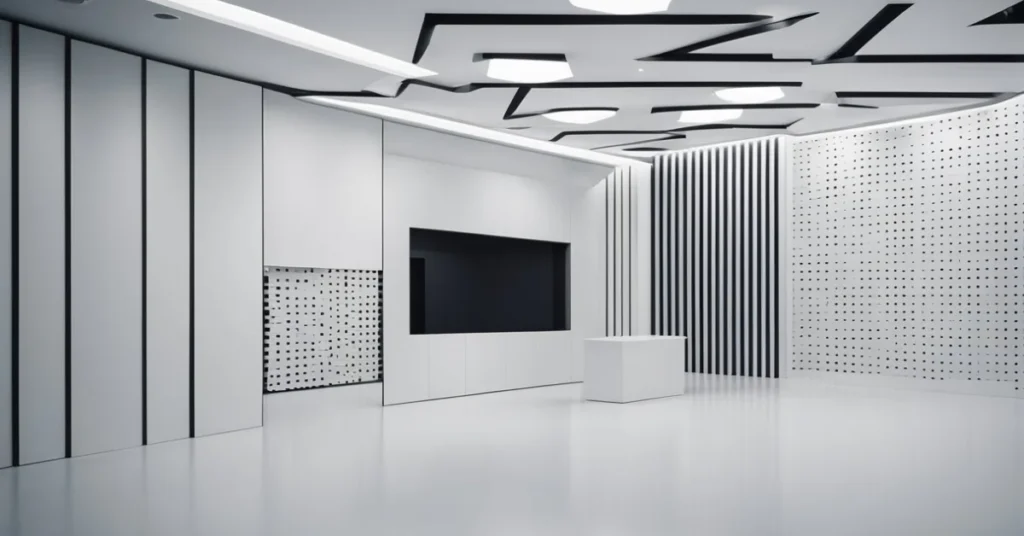
In examining the field of minimalist modern abstract art, we focus on seminal artists and their pivotal works, which embody their philosophical stances and impact on the movement.
Major Figures and Their Philosophy
Frank Stella emerged as a notable figure with his “Black Paintings” series, which showcased his commitment to non-representational painting and a key principle of minimalist art—letting the materials speak for themselves. Donald Juddemphasized the importance of the object’s own presence in space, stripping away any illusion, narrative, or metaphor. Agnes Martin’s paintings, characterized by an ethereal subtlety of color, reflected her belief in the emotive power of art derived from simplicity and repetition.
Carl Andre and Robert Morris, both influential minimalist sculptors, advanced the notion that sculpture is an arrangement of objects in space, often utilizing industrial materials. Their work was showcased prominently in the “Primary Structures” exhibit in 1966, which marked a significant moment for minimalist art. Richard Serra’s large-scale steel sculptures explored the relationship between viewer, object, and environment, challenging conventional notions of sculptural forms.
Contemporary Influences and Practitioners
Minimalist art continues to influence contemporary artists who explore the relationships between color, form, and space. Many contemporary artists draw on the philosophical foundations laid by minimalist pioneers, applying them to an array of media and new contexts.
| Artist | Notable Works | Influence |
|---|---|---|
| Dan Flavin | Monuments for V. Tatlin | Sculptural lighting pieces |
| Sol LeWitt | Wall Drawings | Pioneering conceptual art |
| Smaller scale practitioners | Reflect similar minimalist concerns |
The ongoing interest in conceptual art and minimalist principles can be seen in the simplified forms and reduced palettes of today’s installation art and digital abstract works, where a careful balance of color and form continues to communicate complex ideas and experiences.
Theoretical Foundations
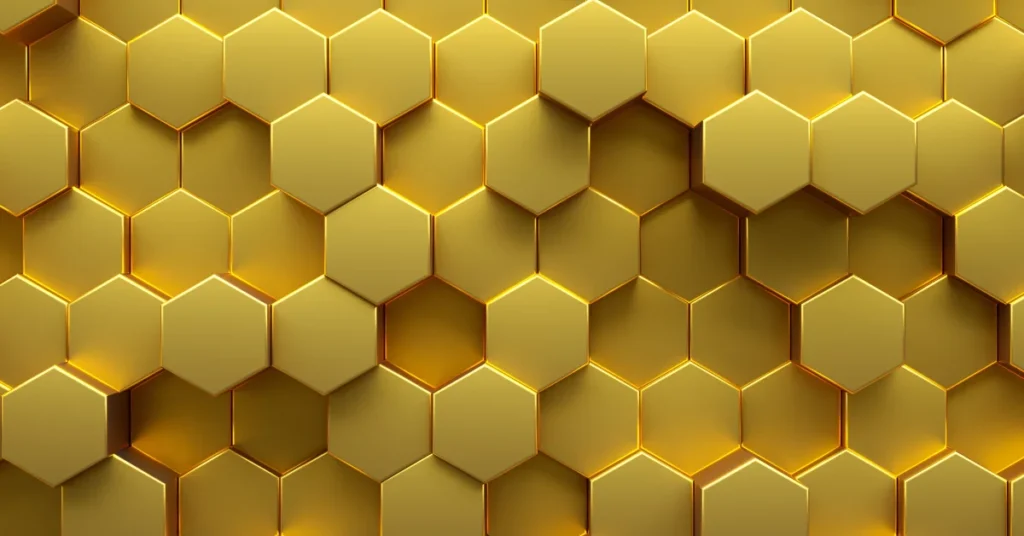
In exploring the theoretical foundations of minimalist modern abstract art, we address its philosophical underpinnings and cultural and social relevance, grounding our understanding in the core principles of minimalism and abstraction.
Philosophical Underpinnings
Minimalism in art embraces simplicity and order, stripping away excess to focus on the essence of form and beauty. We recognize that this philosophy draws on notions of truth and reality, where less represents more, and the minimal means can express expansive concepts. The emotion and meaning conveyed through minimalist abstract art are often a conversation with conceptual art, where the idea or concept being explored takes precedence over traditional aesthetic and material concerns.
- Key Philosophical Concepts:
- Simplicity: Reducing elements to essentials.
- Order: Logical, harmonious arrangement.
- Beauty: Aesthetic appeal in simplicity.
- Truth: Unobstructed by non-essentials.
Minimalist abstract art challenges us to find balance through reduction, prompting viewers to engage in a deepened state of contemplation.
Cultural and Social Relevance
The cultural and social relevance of minimalist abstract art lies in its ability to transcend specific historic or cultural contexts, appealing to universal notions of harmony and equilibrium. It acts as a mirror reflecting our own experiences back to us, often inciting a self-expression and exploration of our internal states. Abstract art as a whole plays with symbolism and representation, allowing interpretation grounded in personal and communal significance.
- Social Impact:
- Conversation: Engaging viewers in dialogue.
- Exploration: Encouraging introspection and personal discovery.
- Balance: Reflecting societal yearnings for stability.
We find that minimalist abstract art extends its influence beyond visual arts, resonating in other mediums such as musicand architecture. It forms a visual language that facilitates a broadened conversation around the concepts it embodies.
Impact and Influence
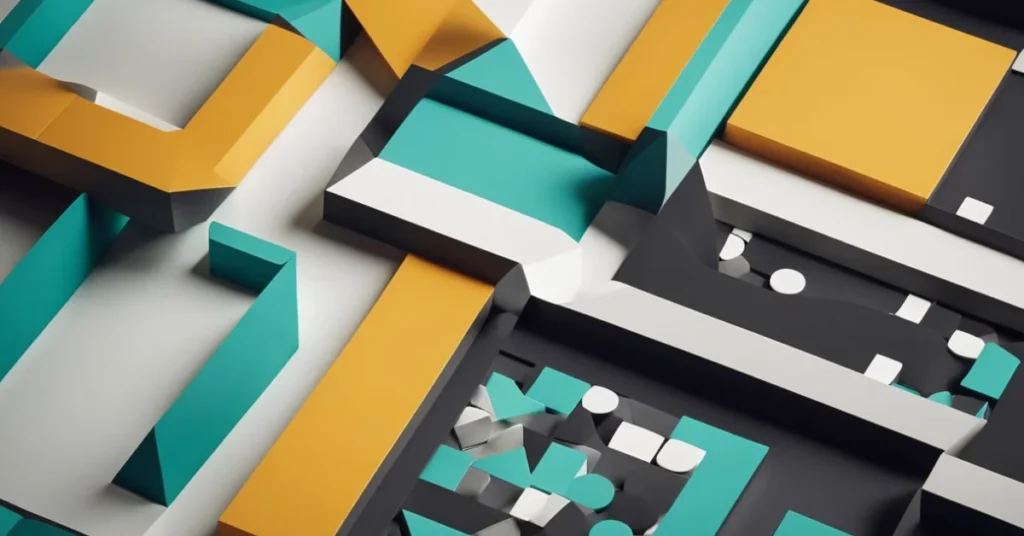
We see minimalist modern abstract art as a significant driver of change across multiple domains, profoundly affecting emotional resonance and aesthetic values in contemporary culture.
On Other Art Forms
Minimalist modern abstract art has been pivotal in challenging and reshaping the boundaries of art movements. Our observations confirm that its emphasis on abstraction and monochromatism has inspired a reductionist approach in various artistic practices. To illustrate:
- Visual Arts: A shift toward simplistic yet emotionally charged compositions.
- Performance Arts: An increased incorporation of minimalist sets and abstract narratives that focus on the essence of emotion and experience.
In Design and Popular Culture
Our experience tells us that minimalist modern abstract art has permeated into graphic design and popular culture in discernible ways. Gathering evidence from platforms like Etsy, we’ve noticed:
- Graphic design: A trend in embracing minimalistic graphics, characterized by clean lines and reduced color palettes, to communicate messages more effectively.
- Popular culture: The replication of abstract concepts across media, leading to merchandise that embodies simplicity and emotional clarity.
In Interior and Architectural Design
We’ve witnessed minimalist modern abstract art’s influence in interior and architectural design, transforming spaces into embodiments of feeling and function. Key impacts include:
- Interior design: A notable preference for simplicity and open landscapes within living spaces, punctuated by abstract art pieces that evoke emotion without clutter.
- Architecture: The creation of clean, stripped-down structures where the interplay of light, form, and color elicits a profound and minimalist aesthetic, mirroring the essence of modern abstract art.
By examining the contributions of minimalist modern abstract art, we’ve traced a legacy of influence that endures in the textures of modern culture and design.
Collector’s Corner
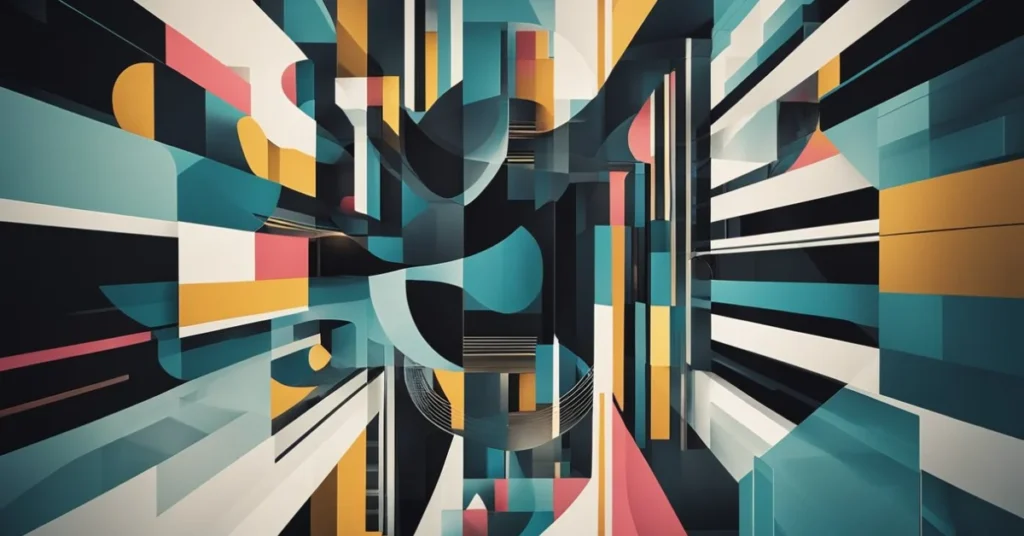
In this section, we explore the intricacies involved in acquiring and maintaining a collection of minimalist modern abstract art. We focus on core practices that enhance and preserve the value of your art pieces.
Acquiring Minimalist Art
When we look to acquire minimalist art, we prioritize works that exemplify the genre’s focus on simplicity and form. We often seek pieces that use repetition and tension within their pattern to evoke depth and introspection. Acrylic paintings and sculptures are the two primary mediums we encounter in minimalist art.
Acrylic Paintings:
– Pattern: Look for artworks that use minimal color palettes and repetitive shapes.
– Canvases: Opt for canvases that have smooth, clean finishes, which complement the subtle complexities of minimalist pieces.
Sculptures:
– Review notes on sculpture that detail the use of space and material.
– Material Selection: Favor sculptures with industrial materials that mirror the minimalist aesthetic.
Maintaining a Collection
Once we have our collection, the upkeep is vital to sustain their artistic and monetary value. It is our responsibility to ensure that each piece, be it a sculpture or painting, is preserved under optimal conditions.
General Maintenance Tips:
- Painting Care: Keep canvases away from direct sunlight to prevent fading; monitor humidity levels.
- Sculpture Care: Regularly dust and clean sculptures, avoiding harsh chemicals that may corrode materials.
- Notes & Documentation: Maintain detailed notes for each piece, including the artist’s name, the piece’s history, and any restorative work performed. This not only enhances our understanding but also substantiates the value of each piece within the art collection.
Insurance and Appraisal:
- Ensure all items are appraised by a professional and are adequately insured. It’s not an exaggeration to say that this can safeguard our investment considerably.
Realism in Expectations: While minimalist art rejects realism in form, we must be realistic in our expectations of maintaining value. Regularly revisit and re-evaluate our collection strategy, adapting to changing trends and market conditions.
Frequently Asked Questions
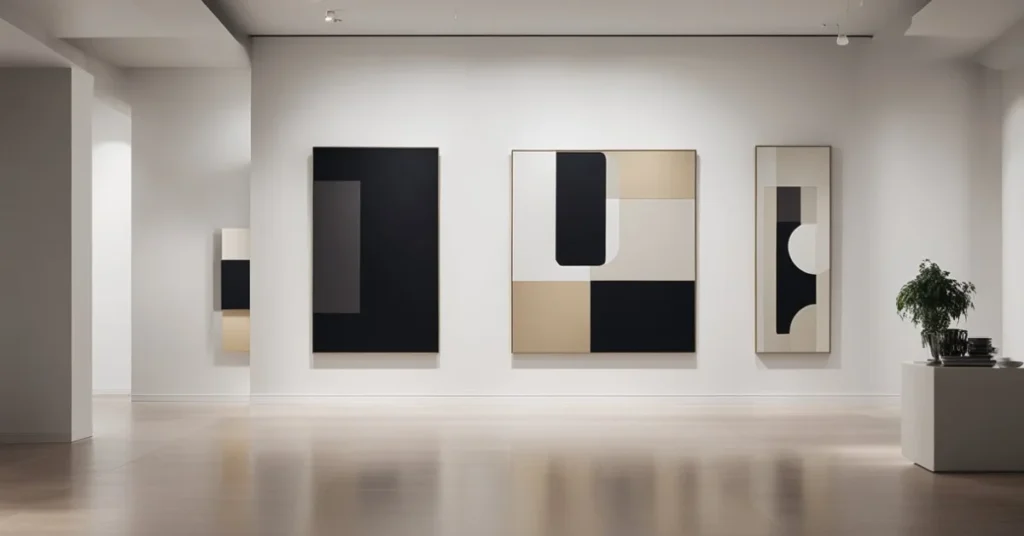
We’ll address some of the most common inquiries about minimalist modern abstract art, providing insights to enhance your understanding and appreciation of this art form.
What are the defining characteristics of minimalist modern abstract art?
Minimalist modern abstract art is known for its simplicity, use of monochromatic color palettes, and emphasis on geometric shapes and lines. It strips away the non-essential elements to focus on the purity of composition.
How can I start collecting minimalist abstract wall art?
To begin collecting, we recommend visiting local galleries, attending art fairs, and exploring online platforms specializing in contemporary art. Start by purchasing pieces that resonate with you personally, and consider the artist’s standing and potential investment value.
Who are some prominent artists in the minimalist modern abstract art movement?
Key figures include Donald Judd, Sol LeWitt, and Agnes Martin. Their work laid a foundation for the movement, influencing many contemporary artists who continue to explore minimalist aesthetics.
What techniques are commonly used in creating minimalist modern abstract paintings?
Artists often employ techniques such as hard-edge painting, where sharp, clean lines delineate areas of color, and color field painting, which features large, flat expanses of color. The process emphasizes precision and careful consideration of the spatial relationships between shapes.
How does minimalist modern art differ from traditional abstract expressionism?
Minimalist art differs from abstract expressionism by rejecting its spontaneous and emotive approach. Instead, it focuses on orderliness, simplicity, and deliberate composition, aiming to convey clarity and objectivity.
Where can I find minimalist modern abstract art for my living room?
Minimalist modern abstract art can be found in a variety of venues, from boutique art shops and online galleries to directly from the studios of emerging artists. For living room pieces, consider the scale of the artwork and its interaction with your space’s color scheme and lighting.
We’ve delved into the world of minimalist modern abstract art, but we’re eager to hear from you! Do you have any personal insights or unique perspectives on incorporating minimalist modern abstract art into your space?
Share your thoughts and join the conversation in the comments below!

